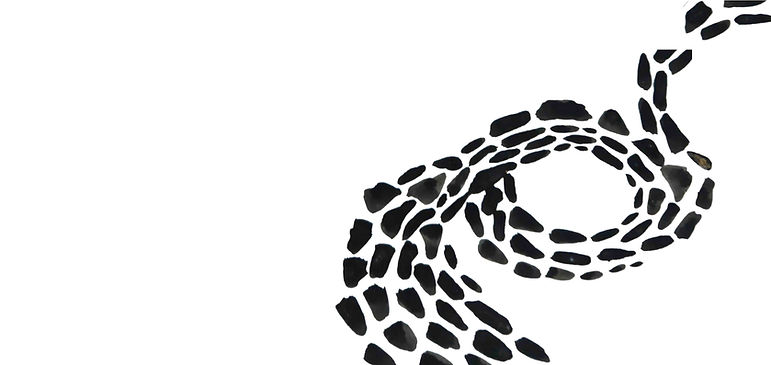top of page
Golau a Dŵr

"It felt as if the babbling and gurgling, the splashing and the lapping were a song I couldn't shake from my head. I found peace in watching the tension on the surface change as the water followed the curves of its path, stretching over a rocky outcrop then collapsing into a miniature waterfall. I watched the sunlight dance in the reflection on the river."

I've had the privilege of being involved in The Penpont Project - the UK's largest intergenerational nature restoration initiative, since 2019. In the Summer of 2024, I had the life changing opportunity to create a commissioned piece for the land library, a centre for art and culture at the heart of the estate. During the residency, my relationship with the land and the project, as well as my art and my understanding of my creative practice transformed. Read my blog post here.

I was so drawn to the movement of the water, the dappling of the light on its surface, the sounds of its flux. Once I'd given in to the pull of the river, I turned my attention to depicting its character through mark-making. A bottle of ink became my medium, its fluidity more apt than the harshness of a pencil.
The sunlight bounces off the river as the water moves. This lively motion is impossible to portray through a still image - I needed a way to capture the ever-changing ebb and flow. I used a series of varying-sized ink brushstrokes to represent the dynamic tension of the surface. I arranged them in free-form waves, ditching all realism in an attempt to illustrate the more abstract qualities of the Usk - the sounds, the life, the movement.
Cyanotypes were a perfect process for this piece, using the sun and water to create a print. They also happen to have a sentimental connection to Penpont for me. Photographer Andy Pilsbury taught us cyanotyping to create artwork from foraged foliage at an early visit to the site, connecting us to nature through creativity. To transform my ink drawings into cyanotype prints, I returned to foraging, collecting leaves in varying sizes and arranging them just like my drawings. In photography, movement is sometimes preserved in still images through exposure techniques. I wanted to feel movement in my work, so this guided my experimentation. Double exposure cyanotypes created two-toned prints and allowed me to feel that sun-dappled effect on the fabric.

I knew I wanted to incorporate sheep's wool into my work, Wool is a fibre synonymous with Wales and its rich agricultural history. Traditional Welsh quilts had a sheep's wool stuffing and were often given as gifts. My textile would be my gift to the land. I had a lightbulb moment when I was told a story of an old Welsh wool blanket a local shop. It was falling apart - The top layer of the quilt fell off, and there was a beautiful blanket beneath. I began to think about the unseen and decided to use the wool by stuffing the panels at varying reliefs. If you give the work a good sniff, you’ll get a slight whiff of farm. This comes from lanolin, the waterproof oil in sheep’s wool that protects them from the elements.
"I said to the sun and the river that I wanted this print, and the sun and the river said: 'Nope, you're having this one."
This was the first opportunity I'd had to really allow the art to guide me, with no real restrictions for the outcome. It wasn't always easy, particularly in the days just before the launch, every minor hiccup felt like my world was about to come crashing down. I remember the panic that set in when the stuffing of the quilt changed its shape, and I had to unpick seams to manipulate the fit. All the “mistakes”, however, became integral elements of the piece. The peeking of the wood through the textile is actually now one of my favourite elements of the work. It reminds me of the rock that juts out into the river by the bank where we enter to swim. There's a deeper level of emotional connection that comes from doing something you love in a place that means a lot to you: I don't just like the artwork, I like the journey that the artwork took me on.
Click here to view more detail with the story map
bottom of page
















